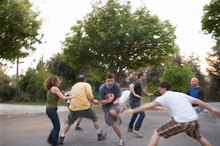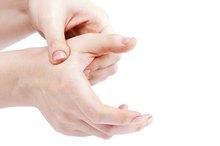Forearm & Calf Muscle Pain
**The forearm and calf muscles are not major muscles but still are subject to stress and overuse.
If you are experiencing serious medical symptoms, seek emergency treatment immediately.
Many factors can contribute to pain in the forearm and calf and can lead to difficulty in movement and functioning. Pain can be symptomatic of a range of disorders from the mildest to the most severe. ** Early diagnosis and treatment are crucial in dealing with forearm and calf pain.
Function
Your forearm muscles keep your wrist and hand stable, aligned and mobile. Tendons attach the muscles to your lower arm bones, the ulna and radius.
Ligaments connect your forearm bones to your wrist and hand bones and keep the wrist joint stable.
Major nerves run through your forearm to stimulate your wrist and hand muscles and enable you to use your sense of touch and feel. Your calf muscles stabilize, align and mobilize your ankle and foot.
The Achilles tendon connects your calf muscles to your heel while ligaments connect your lower leg bones to your ankle and feet 3. Your forearm and calf muscles contract to flex and extend your hands and feet.
- Your forearm muscles keep your wrist and hand stable, aligned and mobile.
- Ligaments connect your forearm bones to your wrist and hand bones and keep the wrist joint stable.
Effects
Torn Tendons & Ligaments From Hyperextension
Learn More
Your wrists and hands are capable of extremely fine motor movements, which place a great deal of stress on your forearms.
Repetitive movements from sport-specific skills or occupational skills can result in overuse injuries. Weight-bearing movements place additional forces on your lower leg muscles and bones. Repetitive movements such as running or jumping can result in overuse injuries and trauma.
- Your wrists and hands are capable of extremely fine motor movements, which place a great deal of stress on your forearms.
- Repetitive movements such as running or jumping can result in overuse injuries and trauma.
Types
Forearm pain can be a result of inflammation of muscles or connective tissue. The repetitive movements of swinging or throwing can cause ailments such as tennis elbow.
Nerve problems such as entrapment or compression can be the result of pressure or trauma on the wrist joint. Occupational injuries such as carpal tunnel syndrome can result from excessive wrist extension that often affects heavy computer use.
Calf pain can be the result of inflammation of muscles and connective tissues, particularly your Achilles tendon. Dehydration and low potassium levels can cause cramps. Shin splints in your calf can be the result of muscular imbalance between your calf and shin muscles. Circulation problems can also result in calf pain.
- Forearm pain can be a result of inflammation of muscles or connective tissue.
- Nerve problems such as entrapment or compression can be the result of pressure or trauma on the wrist joint.
Treatment
Restless Finger Syndrome
Learn More
You can use rest, ice and moist heat to treat minor forearms strains and inflammation. Massage and stretching can stimulate blood flow to the affected area. For more severe injuries, rehabilitation might be necessary. For occupational injuries involving overuse, changes in work habits might be necessary.
Rest and ice can be a treatment for mild calf strains.
More severe strains and tears might require up to a month of inactivity and rehabilitation. For extreme tears, surgery might be necessary.
- You can use rest, ice and moist heat to treat minor forearms strains and inflammation.
- For extreme tears, surgery might be necessary.
Considerations
Pain may be symptomatic of a variety of injuries and disorders. Pain that lasts longer than a few days might require medical attention. While forearm and calf muscles may not be major muscles, they are a major part of body movement and functioning. Talk to your doctor if your pain is severe or does not go away with minor treatment such as rest and ice.
- Pain may be symptomatic of a variety of injuries and disorders.
- Talk to your doctor if your pain is severe or does not go away with minor treatment such as rest and ice.
Related Articles
References
- "Book of Body Maintenance and Repair"; American Physical Therapy Association; 1999
- Sports Injury Clinic: Lower Leg, Calf Pain and Ankle Pain
- Johnson RE, Haas K, Lindow K, Shields R. Plantar fasciitis: What is the diagnosis and treatment?. Orthop Nurs. 2014;33(4):198-204: quiz 205-6. doi:10.1097/NOR.0000000000000063
Writer Bio
Luann Voza teaches both math and science in an elementary school setting and physical education in a college setting. A former fitness-club owner, Voza has taught group fitness classes in step, aerobics, yoga, Pilates and kickboxing. As a bodybuilder, she held the title of Ms. New Jersey Lightweight Division Winner. Voza has a master's degree in exercise physiology and a doctoral degree in education.








